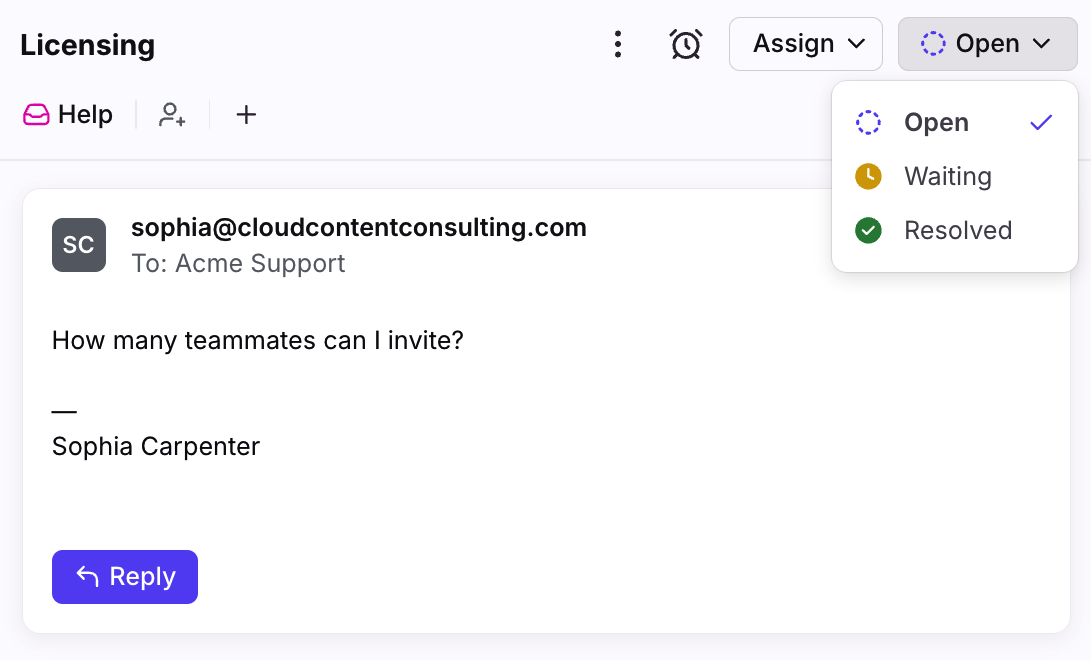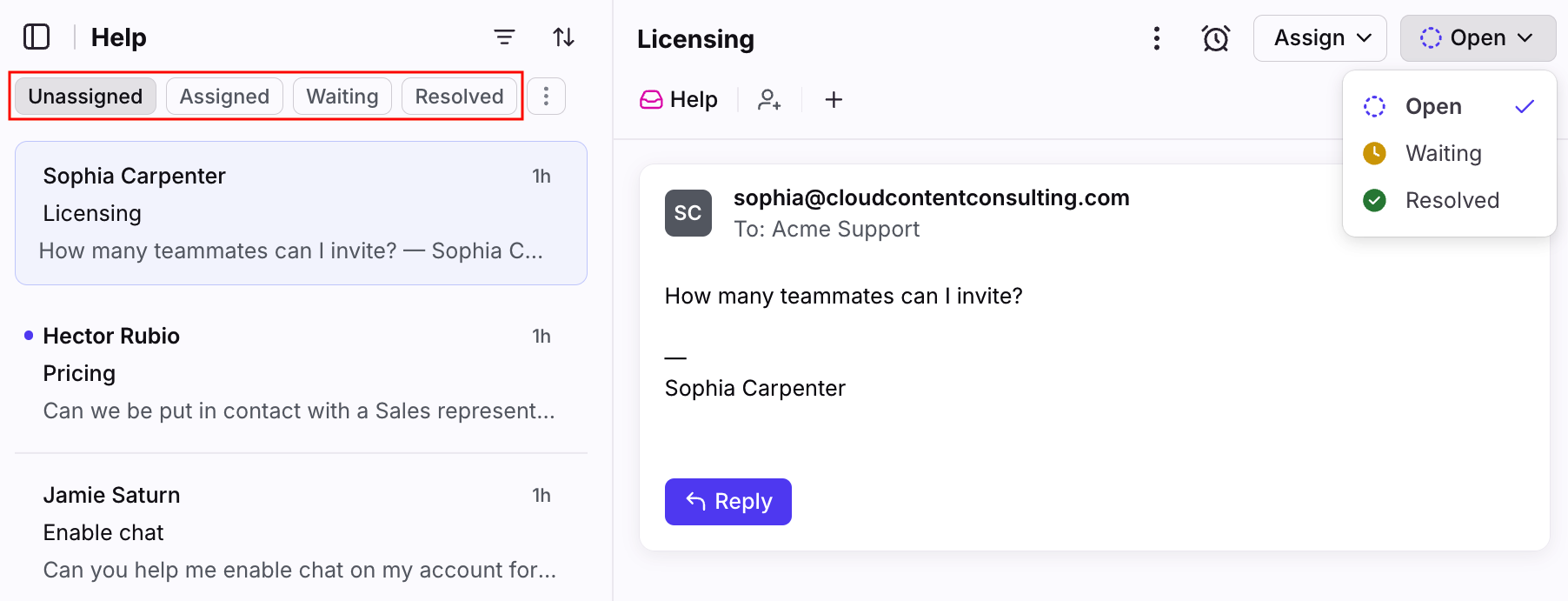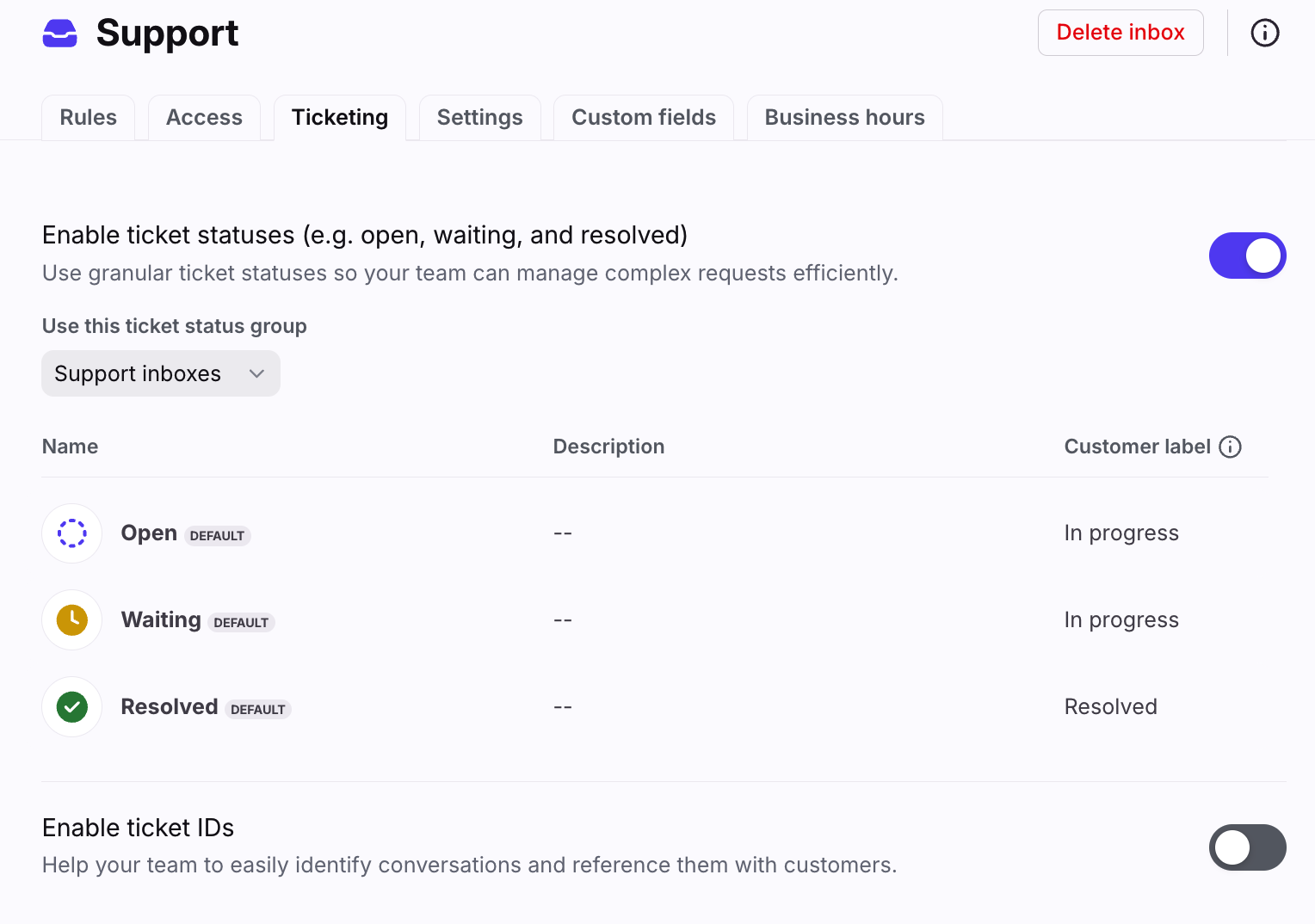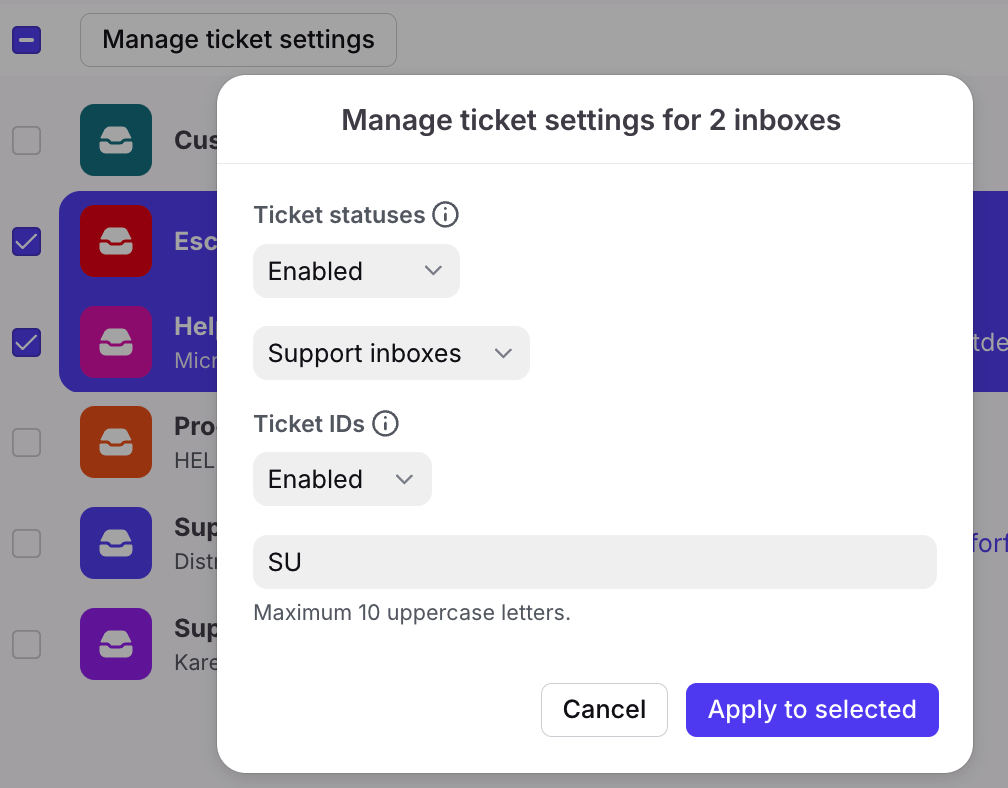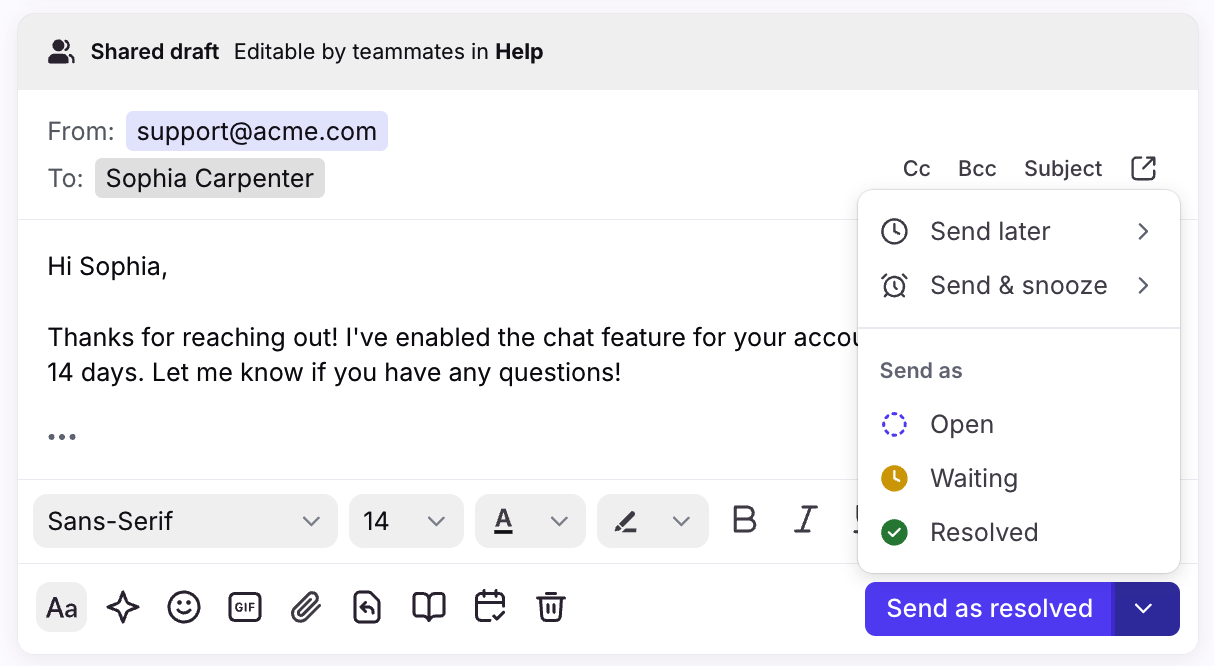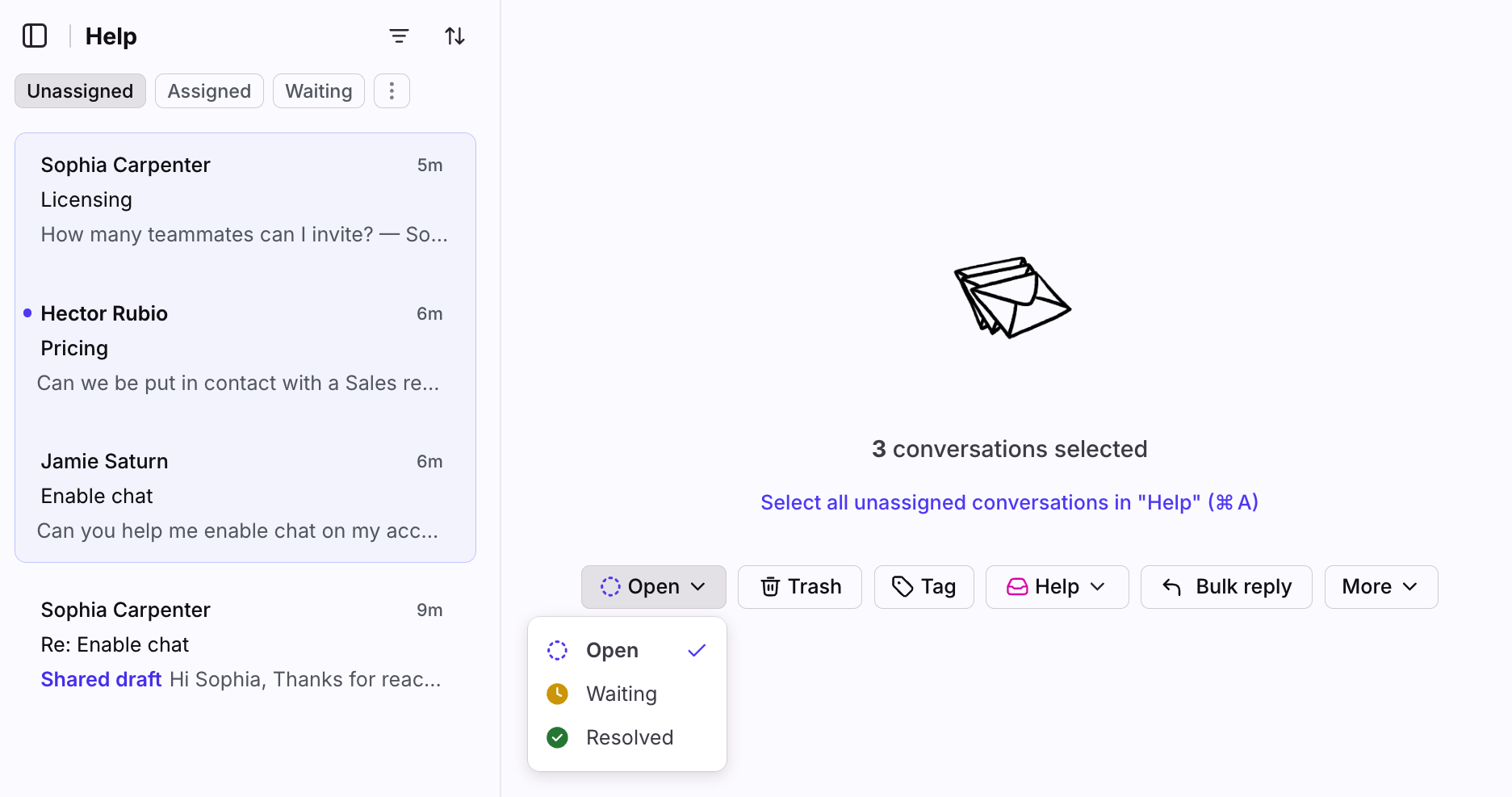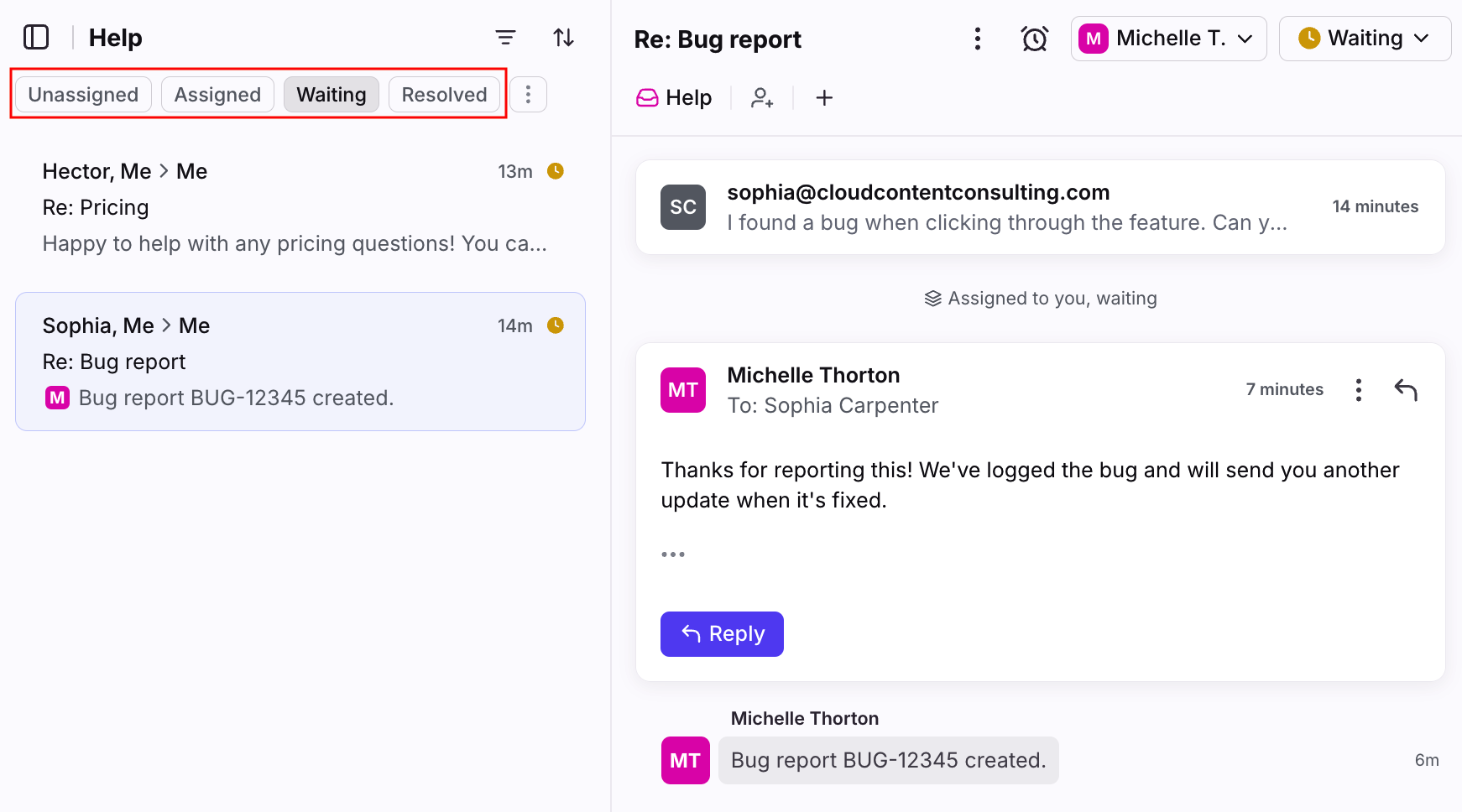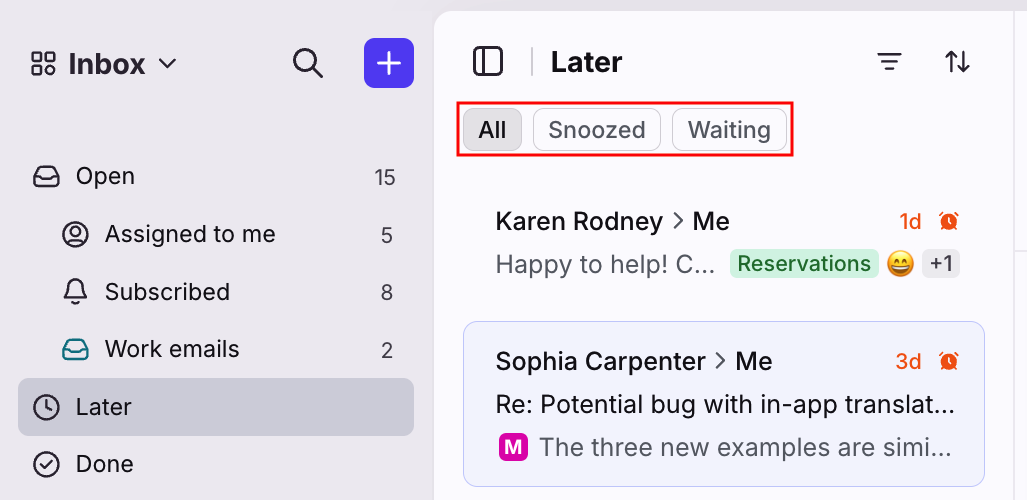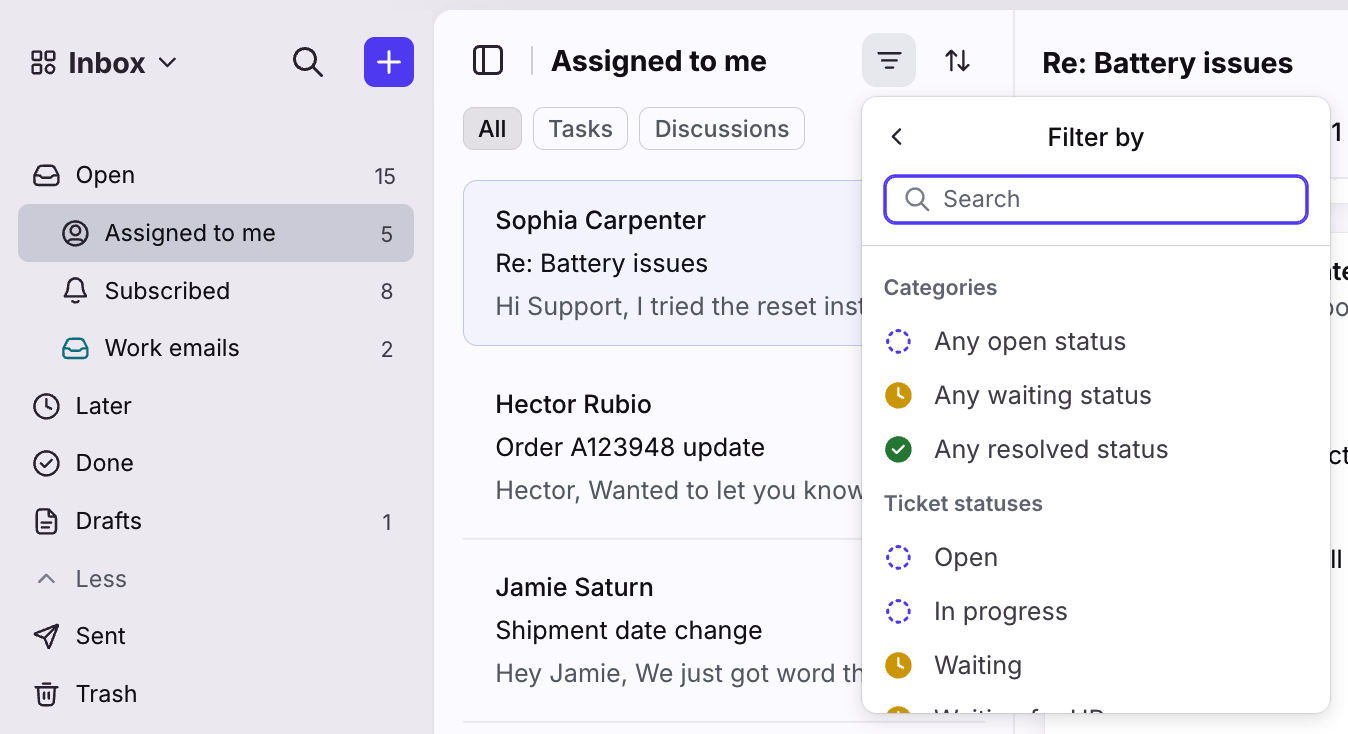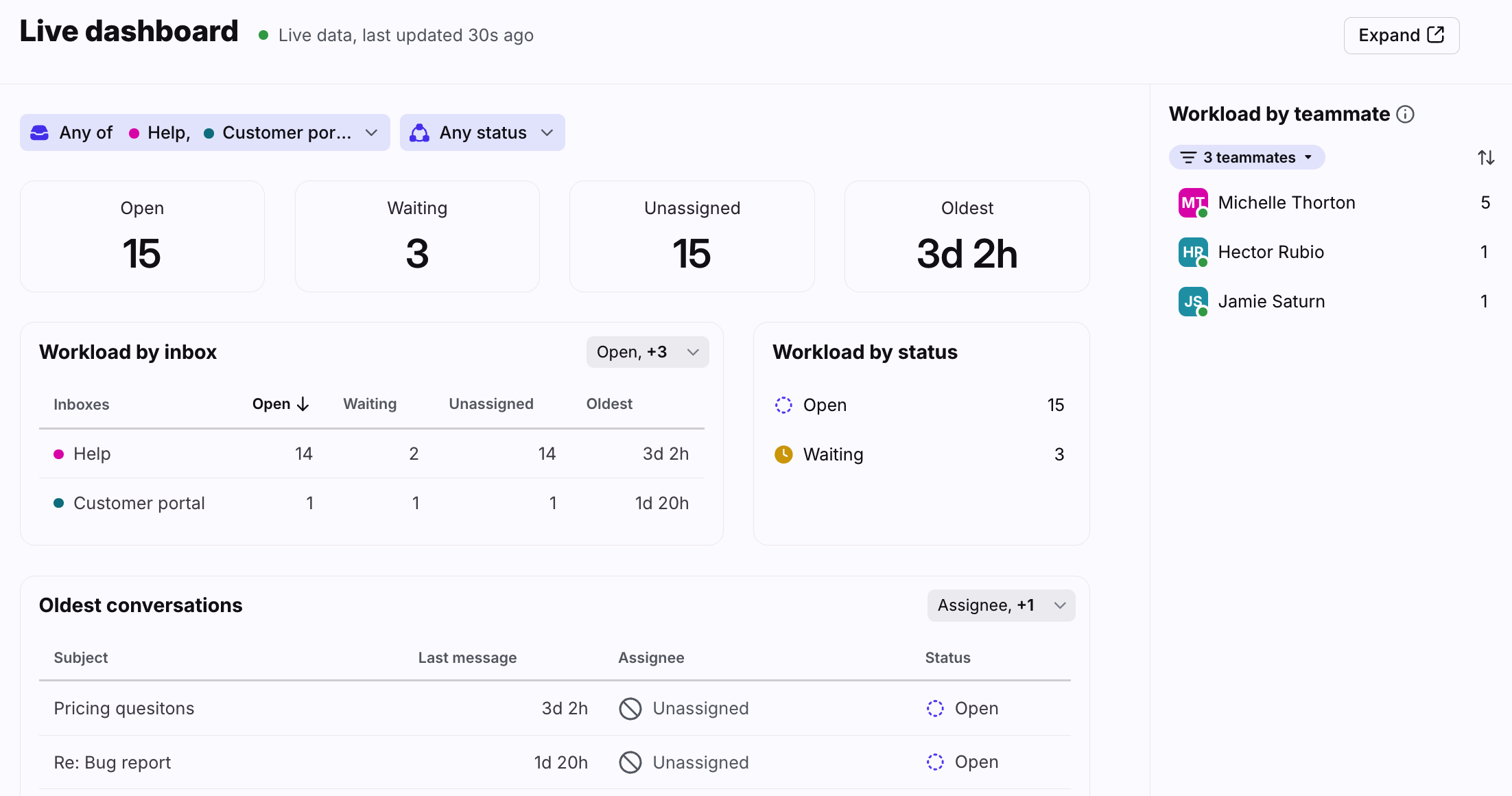Ticket statuses in Front
Overview
Front’s collaborative, modern ticketing solution enables you to track, organize, and resolve complex customer requests at scale. Use ticketing features with the power of real-time collaboration to help your support team effortlessly provide five-star service.
Additional ticketing resources:
Check out our Front Academy course here to learn more about creating your ticketing system with Front.
How it works
After enabling ticket statuses for your shared inboxes, the three new default ticket statuses will be Open, Waiting, and Resolved when working through your queue.
New conversations will come into your inbox as Open.
Previously Archived conversations will be displayed as Resolved.
Previously Snoozed conversations will be displayed as Waiting.
Use the inbox tabs to filter your conversations by ticket status. If you’ve set your personal preference to show Unassigned and Assigned tabs, these tabs are considered Open.
Use Front features like @mentions to collaborate with teammates, set up rules to automate ticket assignments, create tasks or linked conversations to break out subtasks, and more to streamline your ticketing processes.
When to use ticket statuses
Ticket statuses are useful for teams who want to organize customer requests based on specific processes or action items.
🔵 Open status
Set your ticket status to Open when:
The conversation has not been worked on and needs action from your team
Your team is actively working on a conversation and the customer needs a response
🟡 Waiting status
Set your ticket status to Waiting when:
Your team is waiting on more information from your customer, and you intend to follow up if your customer doesn’t respond
You’re waiting for information from a team member before you can send a response to a customer
🟢 Resolved status
Set your ticket status to Resolved when:
The request is completed, and no further action is needed from your team
Your team is waiting on more information from your customer, but no action is needed from your team unless the customer responds
Snooze conversations
If you need to proactively follow up with a customer or internal team if they don’t respond by a specific date, you should still snooze the conversation.
Best practices
Use the Resolution report in Analytics to measure how long conversations are stuck in Waiting and get a sense of which conversations are truly Resolved. For the best ticketing experience, define how your team should use each status to drive your processes and reporting metrics.
Enabling ticket statuses
Prerequisites
You must be a workspace admin for the inbox you want to manage.
Step 1
Click the gear icon and navigate to your workspace settings.
Step 2
Click Inboxes in the left menu, then select the inbox you want to manage.
Step 3
Click the Ticketing tab, then navigate to the Enable ticket statuses setting. Toggle the setting on to enable it.
In the Use this ticket status group setting:
Select a ticket status group to assign a preset group of custom ticket statuses. This allows you to control which statuses agents can use in different inboxes.
If you select None, agents will see all custom ticket statuses configured for your company.
Step 4
Click Save. When you navigate to conversations in your inbox, you’ll now see new ticket status actions.
Step 5 (optional)
You can also select multiple inboxes and enable ticket statuses or ticket IDs with one action in the inbox list.
Custom ticket statuses
Set up custom ticket statuses for more granular tracking within the default Open, Waiting, and Resolved statuses.
To accommodate diverse team workflows, you can also set up ticket status groups. This allows you to control which statuses agents can use in different inboxes.
See this article to learn more.
Using ticket statuses
Once ticket statuses are enabled, your inbox tabs, inbox actions, and send actions will reflect the new statuses Open, Waiting, and Resolved.
In the composer
When you’re ready to send a reply, click Send as resolved or use the arrow icon to select from other conversation statuses and actions.
In conversations
Quickly change a ticket’s status using the quick actions in the conversation list, or by using the dropdown in the status bar.
You can also select multiple conversations and change their statuses using a mass action.
Inbox tabs
In your shared inbox section, you’ll see the tabs Unassigned/Assign OR Open (based on your preferences), Waiting, and Resolved.
In your Later and Done sections, you'll see both traditional (Snoozed/Archived) and ticket status (Waiting/Resolved) tabs. The Snoozed tab will show conversations with the Waiting status AND have a snooze timer.
In the conversation list
In your conversation list, use the Filter feature to focus on conversations with a specific status.
Analytics
In the Analytics Live dashboard, use the status filter to view your ticket status metrics in real time.
You’ll see these additional fields:
Key metrics cards: Waiting card
Workload by inbox table: Waiting column
Oldest conversations table: Status column
Ticket statuses are also visible in the following reports:
FAQ
What channels are supported?
Ticket statuses work with all channel types.
Can I change the default status in my send button?
It is not possible to select a default custom status in your send button. However, your send button personal preference maps to a ticket status depending on your selection:
Send → Send as open
Send & archive → Send as resolved
No change for Send & snooze, but snoozed tickets will appear in the Waiting tab
How do ticket statuses appear in my Assigned to me section?
If you are the assignee of the conversation and you are viewing the conversation from your “Assigned to me” view, you'll see all open tickets assigned to yourself.
How will I know when the customer replies to a conversation?
When the customer replies to a conversation, the conversation will automatically reopen into the Open (or Unassigned or Assigned) tab.
Conversations automatically reopen based on your company’s bump settings, regardless of ticket status.
How does snoozing work with ticket statuses?
When you snooze a conversation, it will automatically be moved to:
The Later section in your individual workspace
The Waiting tab in your shared inbox section
When the snooze timer expires, the conversation will automatically reopen into the Open (or Unassigned or Assigned) tab.
How do ticket statuses affect resolution metrics and other analytics?
Use the Resolution report to view your team's resolution metrics based on ticket statuses.
If you have set up conversation stages for your inboxes, Waiting conversations will be counted as Unresolved.
How do rules work with ticket statuses?
Your rules will work as expected when you enable ticket statuses for an inbox that has rules set up, and uses the following mapping:
Open conversations map to Open ticket status
Snoozed conversations map to Waiting ticket status
Archived conversations map to Resolved ticket status
If you disable ticket statuses, the mapping above is reversed. e.g. Resolved ticket status maps to Archived status.
To learn more about creating rules or macros with ticket statuses, see this article.
Can I use CSAT with ticket statuses?
Yes. Front's CSAT feature supports ticket statuses.
Do time goals work with ticket statuses?
Time goal behavior remains the same as today. Goal timers do not reset when conversations reopen after being in Waiting or Resolved.
Can I assign ticket statuses to specific inboxes?
Yes. To assign ticket statuses to specific inboxes, you must:
Enable ticket statuses in your inbox settings (using the instructions above).
Set up custom ticket statuses.
Create ticket status groups.
In the ticket status group, select the ticket statuses to include in the group, and select which inboxes should have access to the group.
See this article to learn how to create custom ticket statuses and status groups.
Pricing
This feature is available on the latest Starter plan or above.

